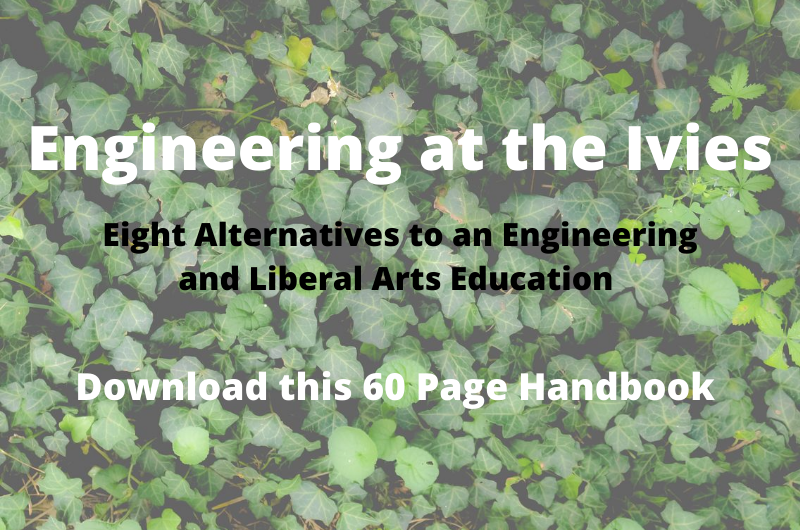
So, you want to study engineering at an Ivy League college?
Calling all students interested in pursuing an engineering degree and are looking at the Ivy League as potentially good fits.
Download this 60-page handbook which includes 8 Chapters – Covering in detail each of the 8 Ivy League Engineering Programs.
- Brown
- Columbia
- Cornell
- Dartmouth
- Harvard
- Princeton
- Penn
- Yale
Confused about which Ivy might offer the best engineering fit for you? Then this handbook is for you. Understanding fit when it comes to engineering can be a challenging task. Each school has a very different approach to its engineering program. One size does not fit all. All eight programs are very different.
Of the 8 Ivy League Engineering programs – find the answers to these questions.
- Which program balances the best of liberal arts with engineering for my goals?
- Which program has an accredited program under the degree I am most interested in?
- Which school facilities will fulfill my goals and aspirations of college life and my major?
- When do I need to choose my major?
- Where can i apply my AP exam results for college credit?
And much more.
Why I wrote this handbook:
For as long as I have been practicing as a consultant, students have told me they want to attend an Ivy League institution for engineering, but they can’t tell me why. I can talk about fit until I am blue in the face, but when it comes to the eight Ivies, my students are spellbound at the idea of studying at any one of these storied institutions. I try my best to avoid lumping the Ivies together as a single entity, but this is where my students often start.
As a consultant who specializes in STEM, I have seen my share of uber-talented students, who by all measures should and could get into any of these eight schools – kids that have been hired by Apple at age 13, students with patents, commercial prototypes, published research and profitable engineering businesses. When it comes to building their college list and researching programs, I find that the Ivies get lumped together all too often. These eight schools have very different programs, degree offerings, requirements, and majors. While all have a foundational liberal arts education, these schools vary in their approach to both engineering and liberal arts; each has a different balance between their ‘core’ liberal arts education and technical courses, and offer degrees for future practicing engineers and for students who will never see the word engineer on their resume.
Understanding the nuances of each school as it applies to a particular student requires thoughtful reflection, self-awareness, and research. This book will help students reverse-engineer from their career aspirations and goals, backing into the types of programs, BS vs. BA vs BE, and majors that can deliver on their goals and beyond with the most flexibility, joy, and success.
This handbook is my contribution to helping this process along.